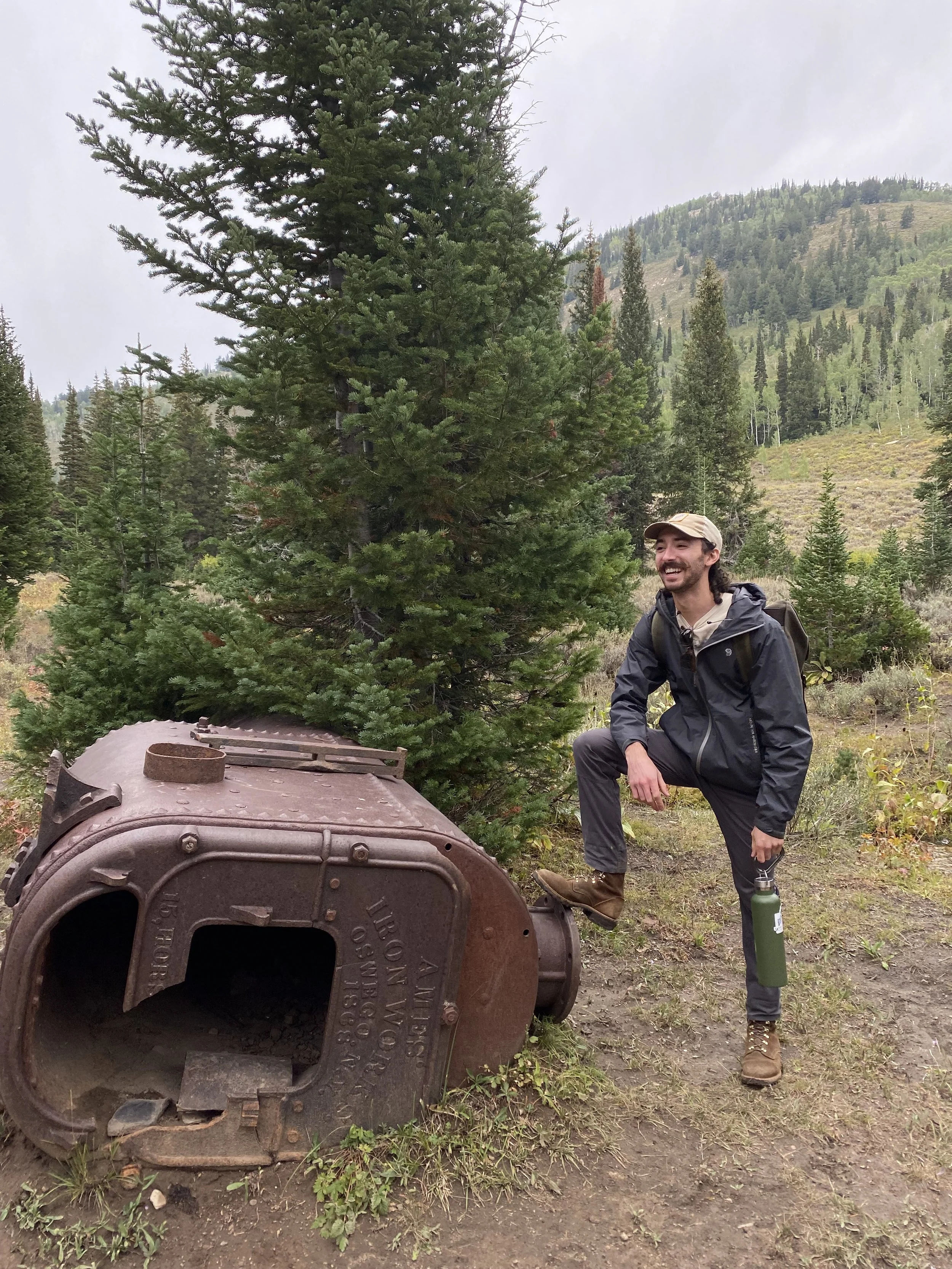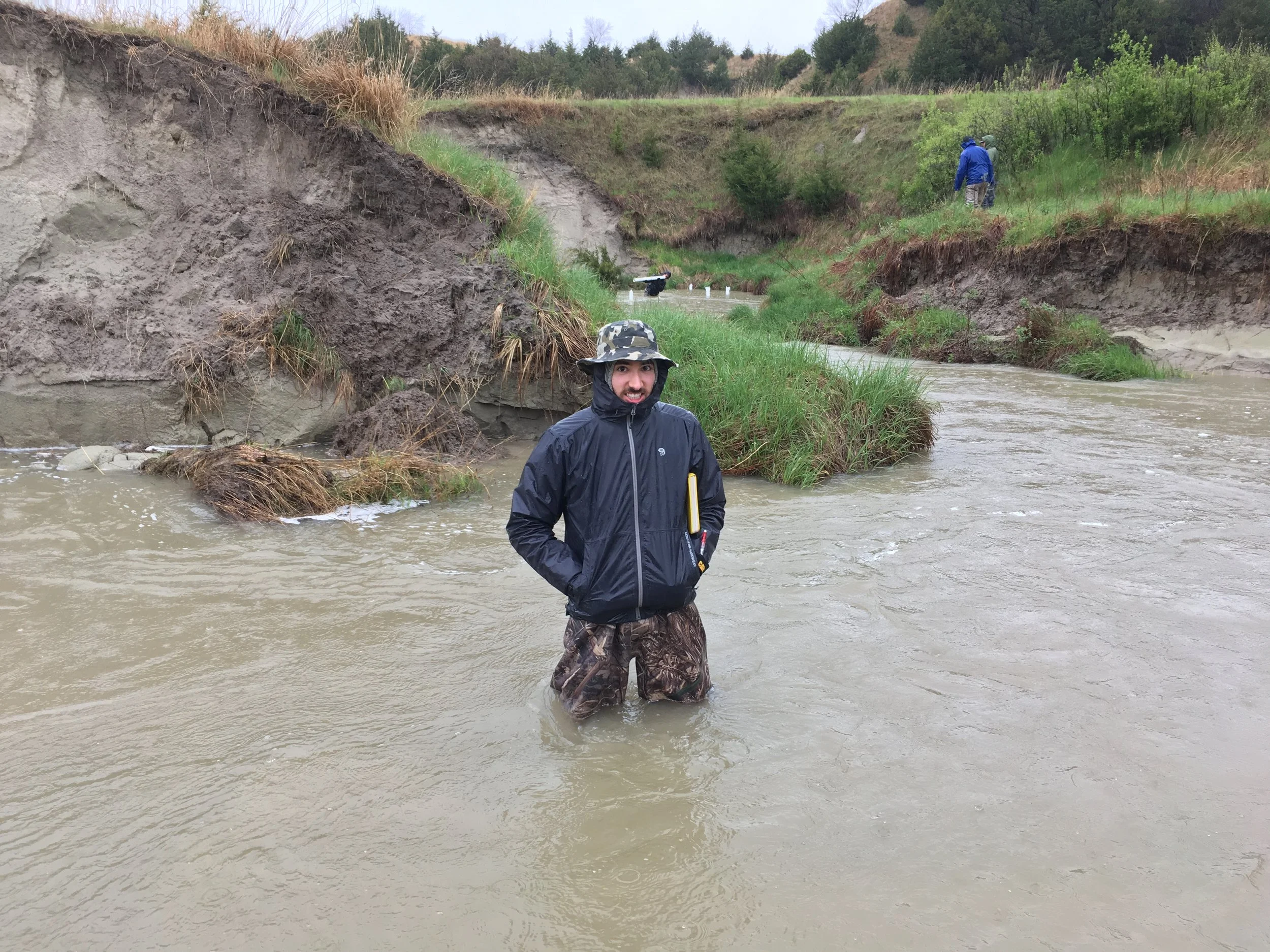Welcoming Our New Riverscape Project Manager
We’re excited to have Jens Ammon joining our team as Riverscape Project Manager on our Riverscape Restoration project! Get to know him in our interview below.
What is your favorite part of riverscape restoration?
The best part about restoring streams is how tangible the results of our work are. Being able to learn a new skill and immediately use it to make the world a better place is exactly the kind of job I want.
All of our time spent planning, designing, and organizing the restoration project ends with a field day of standing in the river and getting muddy building beaver dams. Despite it basically being a pile of dirty sticks in a river, I love having that physical end product of a beaver dam. Seeing the transformation from an incised, featureless stream at the start of the day to a complex, interconnected riverscape at the end of the day is incredibly rewarding.
What brought you to this work?
I’ve always been interested in nature, so I knew I needed to join an outdoor profession. Having grown up camping and hiking in all the beautiful landscapes we have around here, I started my natural science career by studying geology at the University of Utah. Learning about rocks was the perfect reason to spend even more time outdoors and had the extra bonus of growing my rock collection. As I continued with geology, I began to realize how important rivers are to both the physical and biological world. This led me to first take an interest in groundwater, quickly followed by an introduction to streams and all the amazing life they support.
My path led to stream restoration when I met all of the incredible watershed science professors up at Utah State University. Studying at USU, I was introduced to beaver dam analogs, native fish conservation, beaver ecology and relocation, and all the other stuff that makes working with rivers so fun. Everybody I have met here in the field of stream restoration has been incredibly friendly and passionate about what they do. With a group like this, I found the career to stick with.
What are you most passionate about?
The driving force behind why I do what I do is my belief in the need for wild places. As much as I love living in a big city, I think we as humans need to experience nature regularly. Being able to escape all the concrete, loud noises, and rapid pace of modern life lets us reset. The fresh air helps us get back in touch with what’s truly important. It’s easy to get caught up in urban life and take the presence of nature for granted, not realizing how easily it can be altered by us.
I believe it is important to have places separated from the impacts of humans, where wildlife and weather are the driving forces shaping the landscape. I want my work to protect this wilderness, giving everyone the chance to experience it.
What do you love most about the work at Sageland Collaborative?
Sageland Collaborative inspires us to take action. I’ll admit I sometimes feel overwhelmed thinking about the environmental problems we’re facing. That feeling is almost always because I don’t know what I can do to help. That’s why Sageland Collaborative’s role as a community-based science leader is so important. The Riverscape Restoration project, Utah Pollinator Pursuit, the Boreal Toad Project – all of these volunteer opportunities are a way we can get out and make actual impacts.
From what I’ve seen, solving our environmental issues works best when it is a community effort, with a little bit contributed by everyone. Sageland Collaborative creates that community, and I’m so glad I have the chance to be a part of it.
What do you wish people understood about stream restoration in the West?
To some degree, I think there is a misconception that restoring a stream is some big complex problem that needs all sorts of engineers, scientists, and legal staff working on it. However, once you bring someone out to the river and show them how we restore streams, all that overwhelming complexity goes away. Especially with the process-based restoration approach we use at Sageland Collaborative, there seems to be an inherent logic behind what we do. Mimicking nature just seems natural. As more people learn how simple it can be to improve a river, streams, wildlife, and everyone else interacting with our water will benefit.
Article by Sarah Woodbury.





